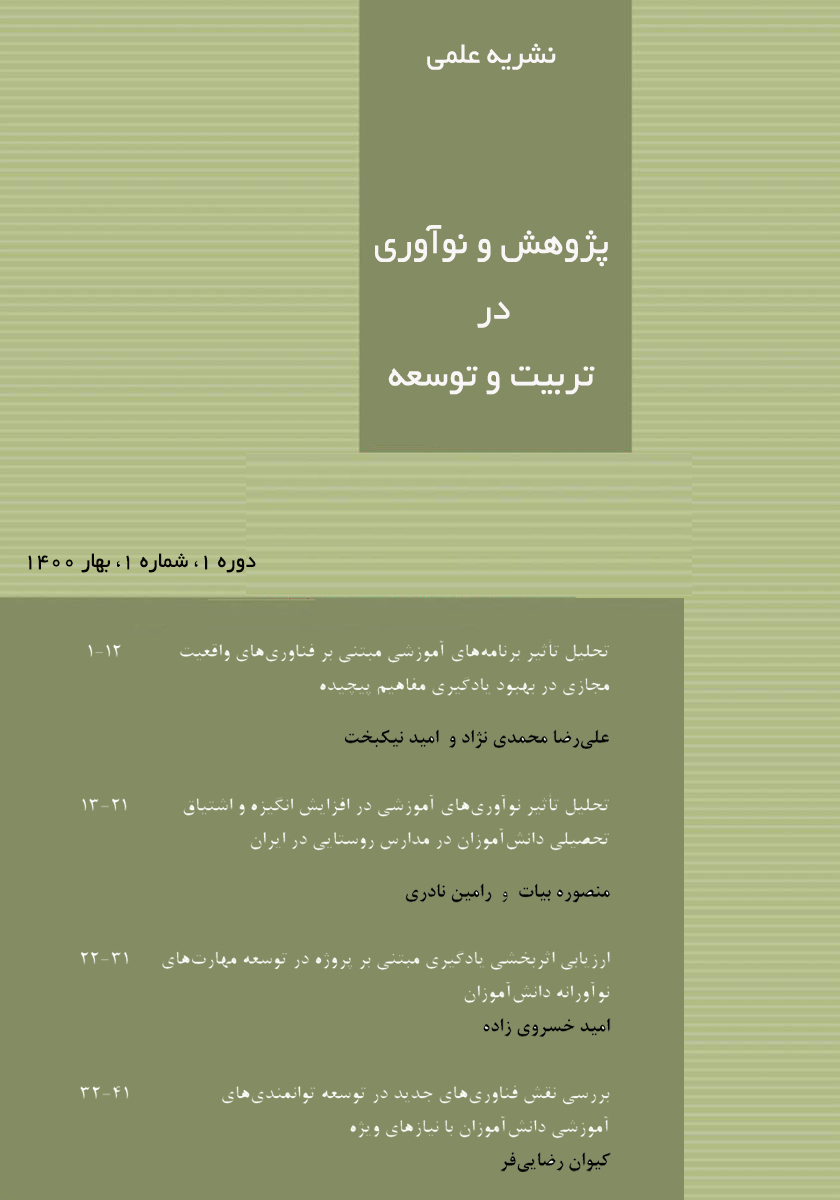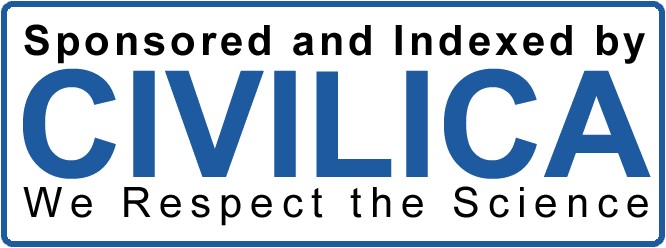آزمون مدل ساختاری عوامل موثر بر توسعه ورزش همگانی زنان عراق
کلمات کلیدی:
ورزش همگانی, زنان, سلامت, سرمایه اجتماعیچکیده
هدف از این مطالعه آزمون مدل ساختاری عوامل موثر بر توسعه ورزش همگانی زنان عراق است. روش تحقیق توصیفی – همبستگی که به روش پیمایشی انجام شده است و برای آزمون فرضیهها از مدل سازی معادلات ساختاری استفاده شد. جامعه آماری شامل 384نفر از زنان استان کربلا بودند که به طور منظم در ورزش همگانی شرکت میکردند. نمونه این تحقیق به صورت تمام در دسترس انتخاب شدند. برای اندازه گیری عوامل موثر بر توسعه ورزش همگانی زنان عراق از پرسشنامه محقق ساخته که بر اساس مصاحبه با خبرگان طراحی شد استفاده گردید. تجزیه و تحلیل دادهها با روش مدل یابی معادلات ساختاری انجام گرفت. نتایج حاکی از آن بود که شرایط علّی (نهادهای تصمیم گیرنده، عدالت توزیعی، تکنولوژی، عوامل فردی، عوامل بین فردی)، راهبردها (ایجاد پیش زمینههای رسمی توسعه مشارکت، ترویج فرهنگ مشارکت، طراحی نظام مشارکت)، شرایط مداخلهگر (ضعف ساختاری،کمبود منابع مالی، کمبود منابع انسانی)، شرایط زمینهای (عوامل اجتماعی، عوامل فرهنگی، عوامل اقتصادی، جهت گیری رسانه ای، قوانین و مقررات) با پیامدها توسعه ورزش همگانی زنان عراق (سرمایه اجتماعی، توسعه ورزش همگانی زنان، توسعه سلامت زنان)، در ارتباط است. توسعه ورزش همگانی زنان در عراق که منجر به سرمایه اجتماعی، توسعه ورزش همگانی زنان، توسعه سلامت زنان میشود بایستی با رویکردی سیستماتیک در برنامه ریزی ورزش و سلامت کشور عراق گنجانده شود.
دانلودها
مراجع
Asadzadeh A, Bagheri G, Alidoost Qahfarokhi I, Saberi A. Designing a strategic evaluation model for public sports programs of the Ministry of Sports and Youth until the horizon of 4141 with a phenomenological approach. Contemporary Research in Sports Management. 2019;9(18):107-21.
Shahbazi M, Shabani Moghadam K, Safari M. Public sports: Necessity, obstacles, and solutions. Quarterly Journal of Majlis and Strategy. 2013;20(76):69-97.
Howie EK, Guagliano JM, Milton K, Vella SA, Gomersall SR, Kolbe-Alexander TL, et al. Ten research priorities related to youth sport, physical activity, and health. Journal of Physical Activity and Health. 2020;17(9):920-9.
Andersen MH, Ottesen L, Thing LF. The social and psychological health outcomes of team sport participation in adults: An integrative review of research. Scandinavian Journal of Public Health. 2019;47(8):832-50.
Wakewich P, Parker BF. Mapping research on women and health in northwestern Ontario. National Network on Environments and Women's Health. 2002.
Ahmad SA, Shajie R, Mohammadi Raoof M. A comparative study of the status of public sports in Iran and selected countries. 2020.
Ahmed HM, Blaha MJ, Nasir K, Rivera JJ, Blumenthal RS. Effects of physical activity on cardiovascular disease. The American Journal of Cardiology. 2012;109(2):288-95.
Das D, Kumar P, Dixit A, Vivek. The Missing Gender: Examining the Barriers to Women's Participation in Sports in India. Business Perspectives and Research. 2023.
McTiernan A. Mechanisms linking physical activity with cancer. Nature Reviews Cancer. 2008;8(3):205-11.
Coll CV, Domingues MR, Gonçalves H, Bertoldi AD. Perceived barriers to leisure-time physical activity during pregnancy: A literature review of quantitative and qualitative evidence. Journal of Science and Medicine in Sport. 2017;20(1):17-25.
Guthold R, Stevens GA, Riley LM, Bull FC. Worldwide trends in insufficient physical activity from 2001 to 2016: A pooled analysis of 358 population-based surveys with 1.9 million participants. Lancet Global Health. 2018;6(10):e1077-e86.
Şahin A, Soylu D, Toktas E, Köse N. The Impact of Media Representation on Female Athlete Identity and Self-Perception. International Journal of Sport Studies for Health. 2024;7(3).
Rich K, Nicholson M, Randle E, Donaldson A, O'Halloran P, Staley K, et al. Participant-centered sport development: A case study using the leisure constraints of women in regional communities. Leisure Sciences. 2022;44(3):323-42.
Pawan SR. Navigating legal challenges for women in Indian sports. International Journal of Sports, Exercise and Physical Education. 2023. doi: 10.33545/26647281.2023.v5.i1a.57.
Gard M, Dionigi RA, Dionigi C. From a lucky few to the reluctant many: interrogating the politics of sport for all Sport and Physical Activity across the Lifespan: Critical Perspectives2018. 67-89 p.
Hao Y, Qiu Z, Xu Q, He Q, Fang X, Wang C. Innovation strategy design of public sports service governance based on cloud computing. Journal of Cloud Computing. 2023;12(1):69.
Ferdowsi MH, Shahouli Koohshouri J. Strategies of key players in Iranian university sports regarding the COVID-19 pandemic using the McTorr method. 2020.
Asadi N. Analytical study of sports management in the country with a focus on women's sports: Doctoral dissertation, Faculty of Physical Education and Sports Sciences, Islamic Azad University, Tehran Central Branch; 2019.
Parsajoo A, Javadipour M, Zaraiyan H. Determining strategies for social participation in public sports in Iran. Contemporary Research in Sports Management. 2018;8(16):13-28.
Nazari R, Shahouli Koohshouri J, Askari AR. Identifying disruptors and drivers affecting the future of physical education sports in Iran. 2020.
Abedini S, Talebi S. Socio-cultural factors related to citizens' inclination towards public sports in Khalkhal. Applied Sociology. 2017;28(65):131-44.
Moradi M, Henari H, Ahmadi A. The role of four media types in the development of public sports culture. Sports Management Journal. 2011;3(26):9-109.
Vafaee Moghadam A, Farzan F, Razavi MH, Afshari M. Analyzing the factors for the development of public sports based on grounded theory. Sports Management Studies. 2018;52:43-72.
Rostami Yingjeh P, Akbari T, Rostami Yingjeh M. Factors affecting the development of public sports among students. 2021.
Soler-Tonda M, Gonzalez R, Gasco J, Llopis J. Strategic management tools for sports management in a public administration body: A case study. Sustainability and Sports Science Journal. 2023;1(1):3-15.
Benn T, Jahromi MK, Koca C. International developments in policy and practice for equity: Girls and women in physical education, physical activity and sport In Women and Sport in Latin America: Routledge; 2016. 18-31 p.
Koller D. The new gender equity in elite women's sports In Routledge Handbook of the Business of Women's Sport: Routledge; 2019. 217-27 p.
Jamieson AR, Wijesundara HD. A review of adaptive equipment and technology for exercise and sports activities for people with disabilities. Disability and Rehabilitation: Assistive Technology. 2024:1-13.
James G, Clawson. Sources of Interpersonal Influence. Social Science Research Network. 2008.
Dharmendra G. Analysing the socioeconomic barriers to sports participation in urban areas. International Journal of Sports, Exercise and Physical Education. 2024. doi: 10.33545/26647281.2024.v6.i1b.79.
Ciomag RV, Pop C. Cultural and Sporting Characteristics of Countries Participating in Sports Competitions. Marathon. 2024;16(1):19-26.
Paudel S, Mishra GD, Veitch J, Mielke GI, Hesketh KD. Examination of Physical Activity, Organized Sport, and Sitting Time Among Women and Mothers From Culturally and Linguistically Diverse Backgrounds. Journal of Physical Activity and Health. 2023;21(3):229-37.
Richard V, Piumatti G, Pullen N, Lorthe E, Guessous I, Cantoreggi N, et al. Socioeconomic inequalities in sport participation: pattern per sport and time trends-a repeated cross-sectional study. BMC Public Health. 2023;23(1):785.
Pawan K, Singh N, Hussain. Mental health struggles among female athletes: Examining the unique challenges faced by women in sports. International Journal of Sports, Exercise and Physical Education. 2024. doi: 10.33545/26647281.2024.v6.i1a.74.
Martinez R, Bhalla J. Impact of professional women athletes' media representations on collegiate women athletes. International Journal of Undergraduate Research and Creative Activities. 2023;12(2):4.
Trussell DE, Kerwin S, Lyn A, Harris L. An Integrative Review and Critical Analysis of the State of Research on Gender and Women and Girls' Sport Participation (2000-2020). Quest. 2024;76(1):1-20.
Hoseini SE, Moghaddam KS, Salehipour M. Inhibiting factors analysis (social, personal) of female students participating in public sport along with provided solutions. 2014.
Brown KM, Hoye R, Nicholson M. Generating trust? Sport and community participation. Journal of Sociology. 2014;50(4):437-57.
Lewandowski JD. Sport, trust, and social capital. Comparative Sociology. 2018;17(3-4):386-405.
Schulenkorf N, Thomson A, Schlenker K. Intercommunity sport events: Vehicles and catalysts for social capital in divided societies. Event Management. 2011;15(2):105-19.
Bull FC, Bauman AE. Physical inactivity: The "Cinderella" risk factor for noncommunicable disease prevention. Journal of Health Communication. 2011;16(2):13-26.
Doré I, O'Loughlin JL, Beauchamp G, Martineau M, Fournier L. Volume and social context of physical activity in association with mental health, anxiety and depression among youth. Preventive Medicine. 2016;91:344-50.
Eime R, Harvey J, Payne W. Dose-response of women's health-related quality of life (HRQoL) and life satisfaction to physical activity. Journal of Physical Activity and Health. 2014;11(2):330-8.
Purcell R, Rice S, Butterworth M, Clements M. Rates and correlates of mental health symptoms in currently competing elite athletes from the Australian National High-Performance Sports System. Sports Medicine. 2020.

دانلود
چاپ شده
ارسال
بازنگری
پذیرش
شماره
نوع مقاله
مجوز
حق نشر 2025 Intesar Hamad Esmail Al-Shammari (Author); Elham Moshkelgosha (Corresponding author); Hossein Makki Mahmoud, Mahboobeh Khodaparast (Author)

این پروژه تحت مجوز بین المللی Creative Commons Attribution-NonCommercial 4.0 می باشد.










